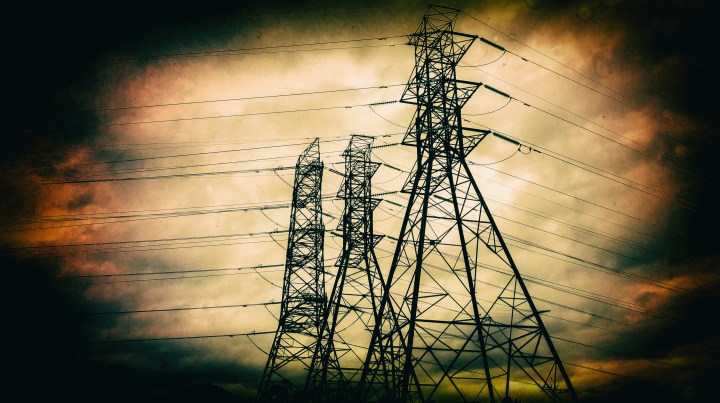BEYOND STATE CAPTURE
How historical use of poor-quality coal has affected Eskom’s efficiency and brought us load shedding

The quality of coal is essential for the adequate functioning of an electrical generation unit. In South Africa, some of it is mixed with sand and rocks.
On Thursday, Eskom released a communique announcing the implementation of Stage 1 load shedding, due to “a shortage of capacity”. This comes after Eskom told Daily Maverick on Monday, 11 March 2019, that even though it was not predicting any load shedding for the rest of the week, it was a possibility, as the “system is tight”.
Earlier this the week, the Zondo commission heard how in 2015, Tegeta, a Gupta-owned company, supplied “sub-standard” coal to Eskom. This was at the insistence of then acting chief executive Matshela Koko.
However, according to energy expert Chris Yelland, the issue is nothing new. Yelland told Daily Maverick that “the issue around coal quality has been ongoing for years. Coal quality is not consistent across the country”.
He said that previously Eskom had coal mines that were “tied” (coal mines that are near power stations). This made it easy to monitor the quality of coal being supplied.
However, over the years these “tied” mines had struggled to keep up with Eskom’s demand for coal, resulting in the utility having to enlist the services of more suppliers.
“Some suppliers deliver coal which has foreign matter like stones, sand, and metal. This, of course, will have an impact on the mechanisms of a generation unit in the long term”.
The National Union of Mineworkers (NUM) energy co-ordinator Paris Mashego echoed Yelland’s views.
“I’ve been told that the coal at Hendrina power station is very poor. It is mixed with sand and rocks.”
This, along with aged mechanisms, hindered power stations’ ability to function at full capacity, and had rendered only six of nine generation units operational. The remaining three are “permanently off”.
Yelland said the quality of coal was essential to the adequate functioning of a generation unit. Quality was determined primarily by two things: Calorific value and ash production.
“High-quality coal has a high calorific value. Inversely, low-quality coal has a lower calorific value. Calorific value is the amount of energy that coal can give off, which comes in the form of heat, which in turn is converted into electricity. So, the less heat there is per ton of coal, the less electricity will be generated,” said Yelland.
On ash as an indicator of quality, Yelland said:
“Ash is left over when you burn coal; the less ash left behind after coal is burnt, the higher the quality; the more ash produced, the lower the quality. This (access ash) becomes a problem because most generation units in the country are designed to handle only a certain amount of access ash, and this impacts on a unit’s performance”.
Andrew Etzinger, Eskom’s head of generation, acknowledged the issue of poor-quality coal at its power stations. He said it was something Eskom was trying to resolve.
Even though the utility is after the best-quality coal, which is expensive due to high demand, there was a station in the country specifically designed to work with low-quality coal.
“We have Lethabo power station in Sasolburg, which is designed to burn poor coal. We’re proud of that because it means we can generate power at very cheap prices”.
The NUM’s Mashego said that to his knowledge, power stations Hendrina, Arnot, Kusile (which is a recently built plant), and Matla were the main power stations affected by the use of poor-quality coal.
He said this type of coal created problems because workers had to manually remove ash in the units stuck in the pipework; something that would not happen if the right quality coal was used.
Kusile and Medupi (other recently built stations) had other issues over and above coal quality.
Mashego said this was due to “poor design and poor workmanship, which causes units to frequently trip. Kusile is also continuously on fire”.
Deputy President David Mabuza, speaking at a question and answer session in Parliament on 12 March, pinpointed several issues that had resulted in Eskom finding itself in its present position of struggling to supply electricity to the country.
“The root problems are population growth, which has caused an extension in supply, bad governance at Eskom, as well as operational challenges (plants are old and in poor condition)”.
A plan to alleviate some of the problems was in motion, and the government had allocated R23-billion a year for the next three years to fund this plan, Mabuza said.
“This turnaround plan will address the immediate plant performance and coal-quality challenges, restoring the security of supply, and this will lay the foundation for addressing both financial and operational sustainability,” he said. DM


















 Become an Insider
Become an Insider